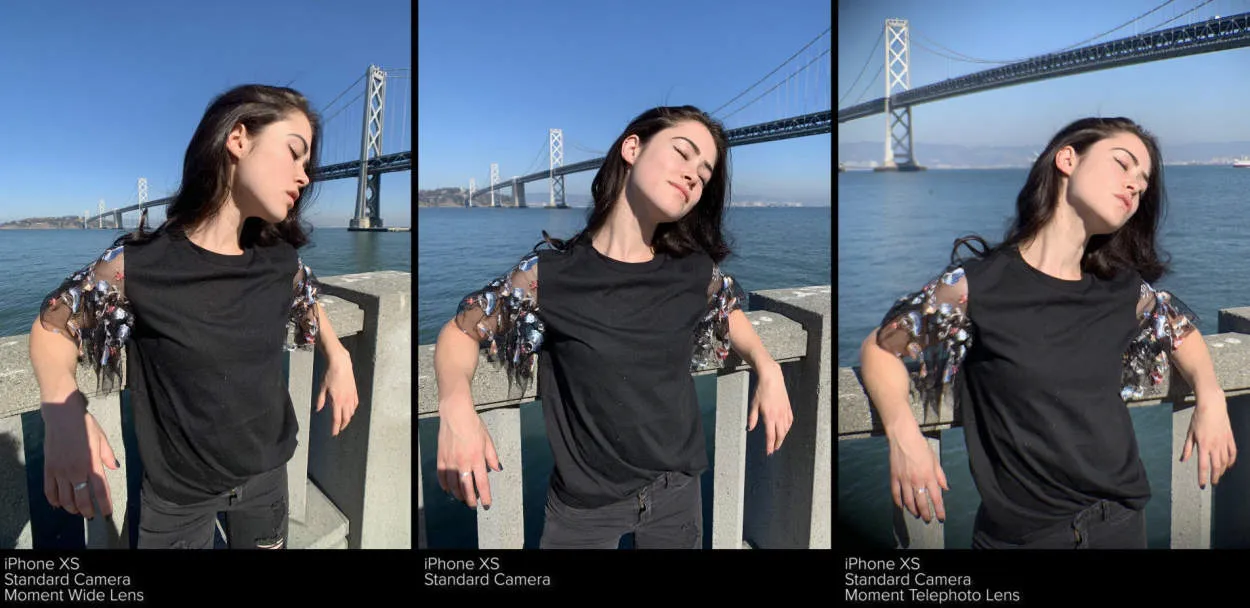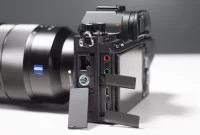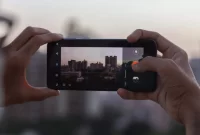The choice of lenses in cameras and smartphones has a significant impact on the quality and artistic potential of photography. Comprehending the importance of lens options is crucial for photographers and enthusiasts, as it directly influences the final outcome of their images.
Understanding the Differences Between Camera and Phone Lenses
In the world of photography, the choice of lens can significantly impact the outcome of your images. This is particularly evident when comparing lenses used in cameras and those found in smartphones. While both camera and phone lenses serve the same basic purpose of capturing photos, there are several key differences that set them apart.
1. Optical Quality
One of the primary distinctions between camera and phone lenses lies in their optical quality. Camera lenses are specifically designed for capturing high-quality images and often incorporate advanced optical elements to minimize distortion and aberrations. On the other hand, phone lenses are typically much smaller and simpler, which can result in lower overall optical performance.
2. Focal Length and Aperture
Camera lenses offer a wide range of focal lengths and aperture settings, providing photographers with flexibility and control over their images. This allows for capturing a variety of perspectives, from wide-angle shots to close-up details. In contrast, phone lenses generally have fixed focal lengths and limited aperture options, which can restrict the creative possibilities.
3. Manual Controls
Cameras often come with manual control options, allowing photographers to adjust settings such as shutter speed, ISO, and focus. These manual controls provide more precision and customization, resulting in greater creative control over the final image. Phone lenses, however, usually lack such extensive manual controls, relying more on automatic settings.
4. Interchangeability and Versatility
One of the advantages of camera lenses is their interchangeability. Photographers can choose from a wide range of lenses with different focal lengths, characteristics, and purposes, depending on their specific photographic needs. Phone lenses, conversely, are fixed and non-interchangeable, limiting the versatility and adaptability when it comes to different photography genres.
5. Size and Portability
Phone lenses have a significant advantage in terms of size and portability. With advancements in smartphone technology, phone lenses are now much smaller and more compact, allowing users to carry them effortlessly. In contrast, camera lenses tend to be larger and bulkier, necessitating dedicated storage space and often requiring additional equipment.
In conclusion, while both camera and phone lenses serve the purpose of capturing photos, their differences in optical quality, focal length, aperture, manual controls, interchangeability, and size make each suitable for specific photography needs. Understanding these distinctions will help you make informed decisions when choosing the right equipment for your photography adventures.
Choosing the Right Lens for Portrait Photography
In the world of photography, lens choices play a significant role in capturing stunning portraits. Whether you’re using a dedicated camera or a smartphone, understanding how different lenses can affect your portraits is crucial. Let’s explore the impact of lens choices in cameras versus phone photography.
Prime Lenses
Prime lenses with fixed focal lengths are often favored by portrait photographers due to their excellent image quality and wide aperture capabilities. These lenses provide a natural perspective and are great for creating creamy bokeh effects, separating the subject from the background.
Zoom Lenses
Zoom lenses offer versatility by allowing you to frame your subject at various focal lengths without changing lenses. While they might not provide the same wide apertures as prime lenses, they are convenient for capturing a range of compositions in portrait photography.
Telephoto Lenses
Telephoto lenses are ideal for portrait photography as they compress the background and bring the subject closer, resulting in flattering images with a blurred background. They are especially useful when shooting outdoor portraits or capturing candid moments from afar.
Wide-Angle Lenses
Wide-angle lenses capture a broader perspective, making them suitable for environmental portraits or when you want to include more of the surroundings. However, be cautious when using wide-angle lenses for individual close-up shots, as they might distort facial features.
Phone Photography
While smartphones have advanced in camera technology, their lens options are limited. Most phones come with a fixed wide-angle lens, which is great for general photography but might not offer the desired depth and background separation for professional-looking portraits.
Conclusion
Choosing the right lens for portrait photography can significantly impact the outcome of your images. Consider the type of lens, focal length, and desired effect when selecting the gear for your next portrait session, whether it’s with a dedicated camera or a smartphone.
Exploring the Versatility of Wide-Angle Lenses
Wide-angle lenses are a powerful tool that can greatly impact your photography, whether you are using a camera or a phone. These lenses have the ability to capture an expansive view, fitting more into the frame compared to other lens choices. Let’s delve into the versatility of wide-angle lenses and understand their impact on photography.
1. Capturing the Bigger Picture
One significant advantage of wide-angle lenses is their ability to capture a larger scene. Whether you want to photograph a beautiful landscape, a bustling cityscape, or a group of people, wide-angle lenses can effectively encompass more of the subject in a single frame. This wide perspective allows viewers to have a comprehensive understanding of the overall environment.
2. Distortion and Perspective
Wide-angle lenses are also known for their unique distortion and perspective. They can exaggerate the size of objects that are closer to the lens, creating a dynamic and exaggerated effect. This distortion can be creatively employed to add a sense of depth, drama, and impact to your images. Different perspectives achieved through wide-angle lenses offer photographers exciting possibilities for artistic expression.
3. Environmental Portraits and Storytelling
Wide-angle lenses are a favorite among photographers who wish to incorporate the surroundings into their images. When capturing portraits or street photography, using a wide-angle lens can help convey a sense of place and context. The background becomes an integral part of the story, offering viewers additional information about the subject and enhancing the overall narrative of the photograph.
4. Architectural Photography
Architectural photography greatly benefits from wide-angle lenses. The expansive view allows you to highlight the grandeur and details of buildings, emphasizing their shape and structure. Wide-angle lenses help prevent distortion in straight lines, ensuring the accuracy of perspective when capturing architecture. Additionally, these lenses excel in tight spaces, making them ideal for interior photography.
5. Creative Compositions
With wide-angle lenses, photographers can experiment with unique compositions. By positioning themselves close to the subject and using a wide-angle lens, they can create a sense of depth and add foreground interest. This technique draws viewers into the image, making them feel as if they are a part of the scene. Play around with angles, leading lines, and elements in the foreground to create visually stunning and captivating photographs.
Wide-angle lenses are a fantastic tool for photographers of all levels. Whether you are capturing breathtaking landscapes, candid street moments, or architectural marvels, these lenses provide plenty of creative opportunities. Remember to utilize the unique perspective and qualities offered by wide-angle lenses to create visually compelling stories.
The Benefits of Telephoto Lenses in Camera Photography
When it comes to camera photography, having a telephoto lens can greatly enhance the quality and versatility of your shots. Whether you are a professional photographer or an avid hobbyist, here are some key benefits of using telephoto lenses:
1. Increased Reach
Telephoto lenses have a longer focal length, allowing you to capture subjects that are far away. This is especially useful when shooting wildlife, sports events, or capturing details in landscapes. With a telephoto lens, you can bring distant subjects closer, filling the frame and creating stunning, detailed images.
2. Shallow Depth of Field
Telephoto lenses have a narrower field of view, which means they can create a more pronounced background blur, also known as bokeh. This effect can help isolate your subject from the surroundings, drawing attention to the main focal point and creating a more visually pleasing image.
3. Compression and Perspective
One unique characteristic of telephoto lenses is their ability to compress the scene, making objects appear closer together than they actually are. This can be creatively used to create unique compositions and dramatically change the perspective of your photographs. It allows you to capture stunning landscapes with mountains appearing more majestic and tightly framed portraits with flattering facial features.
4. Long-range Candid Shots
With a telephoto lens, you can discreetly capture candid moments without getting too close to your subjects. This is particularly useful in street photography or situations where you want to document interactions without interrupting or alerting your subjects. Additionally, a longer focal length reduces the likelihood of causing any discomfort or self-consciousness to your subjects.
5. Optimal for Low Light Conditions
Telephoto lenses often have wider maximum apertures, allowing more light to enter the camera. This makes them great tools for low-light photography, as they can effectively capture well-exposed images even in challenging lighting conditions. Whether you are shooting at dusk, indoors, or at nighttime, a telephoto lens can provide you with the necessary light-gathering capabilities.
Conclusion
In conclusion, the lens choice plays a significant role in both cameras and phone photography. While phone cameras have improved significantly, they still can’t match the versatility and image quality provided by dedicated camera lenses. Whether it’s capturing wide-angle landscapes or stunning close-up shots, cameras with interchangeable lenses offer a wider range of creative possibilities for photographers.




